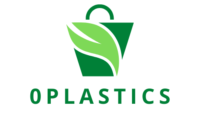For decades, our world has operated on a “take-make-dispose” model. Products are designed for obsolescence, built cheaply, and destined for landfills after fleeting utility. The environmental and economic consequences are undeniable – mountains of electronic waste, depleted resources, and a culture of endless consumption. But a counter-revolution is brewing: a shift towards reusability, where products are built to last a lifetime, valued for their longevity, and seamlessly reintegrated into the cycle of use.
This “Reusability Revolution” is driven by a confluence of factors. Environmental concerns are paramount, with growing awareness of the staggering footprint of our throwaway culture. Climate change, resource depletion, and pollution cast a long shadow, urging us to rethink our relationship with goods. On the economic front, the hidden costs of disposability are becoming evident. Waste management is expensive, and extracting virgin materials puts constant strain on supply chains. Reusability offers a way to break free from this destructive cycle, maximizing the value of resources and minimizing waste.
But how does this translate to actual products? The Reusability Revolution manifests in several key ways:
- Durable design: Products are no longer built for flimsy trends, but for enduring utility. High-quality materials, modularity, and repairable components become the norm. Think sturdy cast iron cookware passed down through generations, not flimsy plastic gadgets destined for quick demise.
- Modularized functionality: Instead of monolithic products, components and functions become interchangeable. Need a new battery for your drill? Replace it, not the entire tool. This extends the usable life and reduces electronic waste.
- Repair-friendly practices: Gone are the days of proprietary parts and sealed electronics. Manufacturers embrace “right-to-repair” principles, providing accessible manuals, spare parts, and even repair tutorials. This empowers consumers to prolong the life of their belongings.
- Circular economy models: Ownership models shift from simple purchase to access-based subscriptions or product stewardship programs. Companies retain responsibility for their products throughout their lifecycle, incentivizing them to build for durability and facilitating reuse or refurbishment.
The benefits of this revolution are multi-faceted. For consumers, it means more reliable products, less frequent replacements, and lower long-term costs. For the environment, it translates to reduced resource extraction, waste generation, and pollution. And for businesses, it opens up new avenues for innovation, customer loyalty, and brand positioning.
Examples are already starting to emerge across industries. Patagonia, known for its outdoor gear, offers a lifetime warranty and encourages repairs over replacements. Dutch clothing company MUD Jeans operates a lease-to-own model, repurposing returned denim into new clothes. Fairphone prioritizes ethical sourcing and modularity, making their smartphones truly “fair” throughout their lifecycle.
Of course, challenges remain. Shifting mindsets from the convenience of disposability to the commitment of reusability requires a cultural change. Building durable products may initially be more expensive, and repair infrastructure needs to be established. But as the reusability movement gains momentum, these challenges will be overcome through collaboration, innovation, and changing consumer priorities.
The Reusability Revolution is not just about making objects that last longer; it’s about fundamentally rethinking our relationship with the world around us. It’s about moving from a fleeting, consumerist mindset to one of stewardship and respect for resources. It’s about building a future where products are companions, not commodities, valued for their enduring usefulness and their place within a circular economy. This revolution is not just possible, it’s necessary. Let’s embrace the challenge and build a world where quality, repair, and longevity become the new hallmarks of success.
